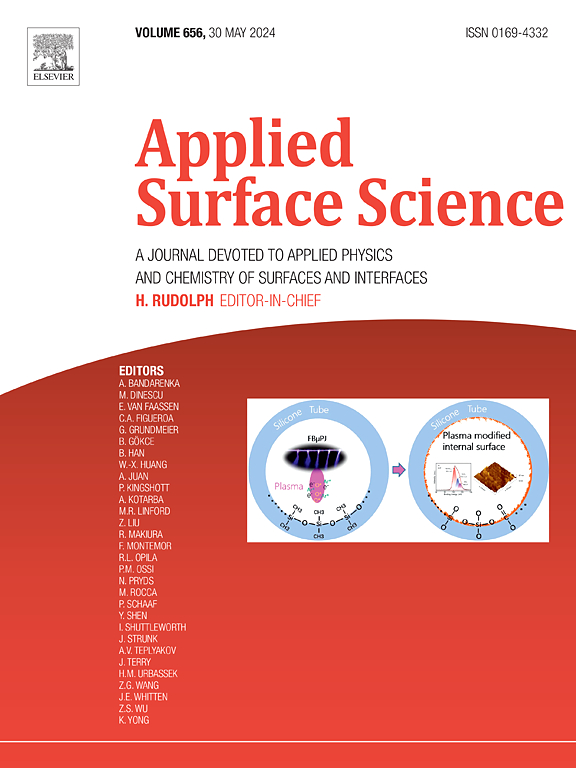随着退火时间的增加,基于ge2sb2te5相变存储器件的可靠性提高
IF 6.3
2区 材料科学
Q2 CHEMISTRY, PHYSICAL
引用次数: 0
摘要
相变随机存取存储器(PCRAM)在重复的相变操作过程中,相变材料中组成原子的扩散会降低其可靠性。本研究报告了延长退火时间后,基于Ge2Sb2Te5 (GST225)的PCM器件的可靠性增强。结果表明,虽然导通电流随着退火时间的增加而略有减小,但转换到SET状态所需的电压保持在1 V左右。此外,每持续一次,耐力循环次数增加10倍。此外,设备没有后退火相比,重置漂移系数减少5.3 %, % 8.8和11.4 % 3 h后退火时间,9 h,和18 h,分别在漂移系数减少38.9 %,51.1 %,分别和59.6 %。随着退火时间的增加,相变材料的电性能变化可以通过分析相变材料的特性来解释,这为后续热处理对PCM结晶行为的影响提供了见解。这些发现有望作为一种额外的方法来提高相变存储器(下一代存储器件)的可靠性,并影响对基于硫系材料的新型半导体器件在相变存储器中使用的组成元素行为的理解。本文章由计算机程序翻译,如有差异,请以英文原文为准。

Reliability improvement of Ge2Sb2Te5-based phase-change memory devices with increased post annealing time
The reliability of phase-change random access memory (PCRAM) can be degraded due to the diffusion of constituent atoms in the phase-change material during repetitive phase-change operations. This research reports the reliability enhancement of Ge2Sb2Te5 (GST225)-based PCM device with prolonged post annealing time. The results indicate that although the on-current slightly decreases with increasing post annealing time, the voltage required to transform to the SET state remains approximately 1 V. Additionally, the endurance cycle count increases by a factor of 10 for each duration. Furthermore, compared to the device without post annealing, the RESET drift coefficient decreases by 5.3 %, 8.8 %, and 11.4 % for post annealing durations of 3 h, 9 h, and 18 h, respectively, while the SET drift coefficient decreases by 38.9 %, 51.1 %, and 59.6 %, respectively. The changes in electrical properties with increasing annealing time can be explained by analyzing the characteristics of the phase-change material, which provides insights into the impact of subsequent thermal treatment on the crystallization behavior of PCM. These findings are expected to serve as an additional approach to enhance the reliability of phase-change memory, a next-generation memory device, and to influence the understanding of the behavior of constituent elements in the development of new types of semiconductor devices based on chalcogenide materials used in phase-change memory.
求助全文
通过发布文献求助,成功后即可免费获取论文全文。
去求助
来源期刊

Applied Surface Science
工程技术-材料科学:膜
CiteScore
12.50
自引率
7.50%
发文量
3393
审稿时长
67 days
期刊介绍:
Applied Surface Science covers topics contributing to a better understanding of surfaces, interfaces, nanostructures and their applications. The journal is concerned with scientific research on the atomic and molecular level of material properties determined with specific surface analytical techniques and/or computational methods, as well as the processing of such structures.
 求助内容:
求助内容: 应助结果提醒方式:
应助结果提醒方式:


